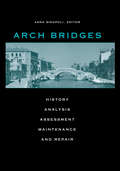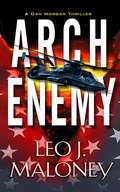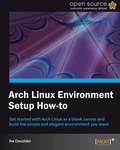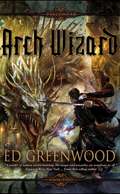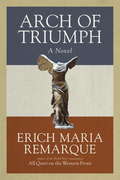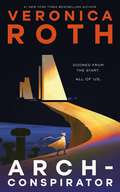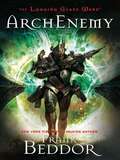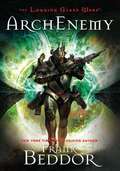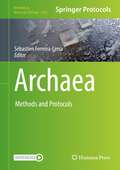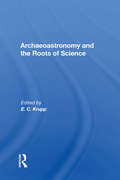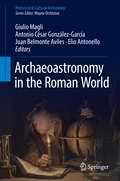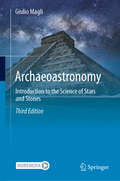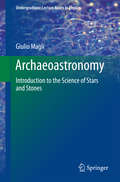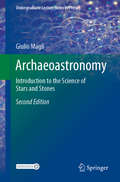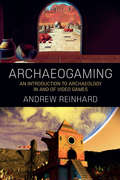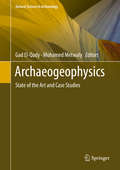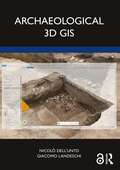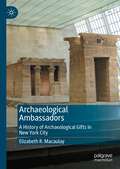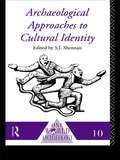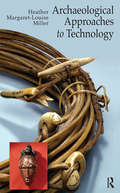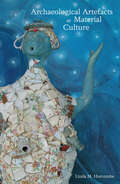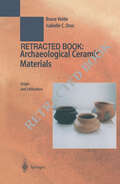- Table View
- List View
Arch Bridges
by Anna SinopoliModern structural engineering surprises us with the mastery and certainty with which it plans and carries out daring projects, such as the most recent metal or concrete bridges, whether they be suspension or arch bridges. On the other hand, little is yet known about the state of knowledge of construction science and techniques which, well before the arrival of modern methods based on the mechanics of deformable continua, made it possible in the past to erect the vaulted masonry structures rthat we have inherited.The fact that these have lasted through many centuries to our time, and are still in a fairly good state of conservation, makes them competitive, as far as stability and durability are concerned, with those constructed in other materials.Although it is known that the equilibrium of the arch is guaranteed by any funicular whatsoever of the loads, contained inside the profile of an arch, finding the unique solution is not such a certainty. In other words, the problem of the equilibrium of vaulted structures is 'Poleni's problem', the one for which the Venetian scientist was able to give an exemplary solution on the occasion of the assessment of the dome of St. Peter's.Arch Bridges focuses on the main aspects of the debate about the masonry arch bridge: History of structural mechanics and construction, theoretical models, analysis for assessment, numerical methods, experimental and non-destructive testing, maintenance and repair are the topics of the Conference. The breadth and variety of the contributions presented and discussed by leading experts from many countries make this volume an authoritative source of up-to-date information.
Arch Communications Group, Inc.
by Krishna G. Palepu Sarayu SrinivasanThe market values Arch differently from analysts' values.
Arch Enemy (A Dan Morgan Thriller #4)
by Leo J. MaloneyAn intelligence agent is on the hunt for a nefarious cyberterrorist in this “utterly compelling” spy thriller by the acclaimed author and Black Ops veteran (Jeffrey Deaver).The world is descending into chaos—and Dan Morgan of the elite intelligence unit Zeta Division knows the worst is yet to come. Mysterious government contractor Acevedo International is smuggling drugs and weapons across the globe. But as Morgan tracks down the nerve center of their illegal operations, an even more terrifying threat emerges—and Morgan's own daughter, Alex, is wrapped up in it.Drawn into an underground organization of college activists, Alex discovers that their true intentions are far more extreme and disturbing than she imagined. Behind it all is a ruthless hacker who has patiently laid plans to destroy America's global security networks. As the time to strike approaches, Morgan and Zeta Division may be the only chance not for victory, but survival . . .
Arch Linux Environment Setup How-To
by Ike DevolderEach task expresses a specific task for setting up an Arch Linux environment. The recipe as a solution is a carefully organized set of instructions to perform the task as efficiently as possible and a discussion on how to apply the solution in different situations. "Arch Linux Environment Set-up" How to is for people wanting to dig deep into a Linux system. By the end of the book you will have basic knowledge how a Linux system is built up, how it boots and a general idea of how it is working. The book also assumes you already know what partitioning is and if you need dual booting you already have some experience with that. For people only trying out Arch Linux the author would suggest following this guide inside a virtual machine.
Arch Of Bone
by Jane Yolen Ruth SandersonContinuing the story from where Moby Dick left off, this compelling boyhood adventure, penned by beloved author Jane Yolen (Owl Moon), hearkens to timeless coming of age tales of yore. Lovingly illustrated by Ruth Sanderson, the journey of a boy and his dog comes to life on the page, renewing the joy of a classic tale.
Arch Wireless, Inc.
by Stuart C. Gilson Perry L. FaganThe largest wireless paging company in the United States has to restructure its debt in response to the collapse of its market. The restructuring faces formidable challenges. Valuing the company is extremely difficult because Arch's public competitors are also severely troubled and the industry's future is highly uncertain. In addition, the company has an extremely complicated parent-subsidiary holding company structure.
Arch Wizard (The Falconfar Saga, Book Two)
by Ed GreenwoodHaving been drawn into a fantasy world of his own creation, Rod Everlar continues his quest to defeat the corruption he has discovered within. He sets off in pursuit of the dark wizard Malraun, only to find that he has raised an army of monsters and mercenaries.
Arch of Triumph
by Erich Maria Remarque Denver Lindley Walter SorellThe evocative story of a man without a country, Arch of Triumph is a World War II-era classic from the author of All Quiet on the Western Front. It is 1939. Despite a law banning him from performing surgery, Ravic--a German doctor and refugee living in Paris--has been treating some of the city's most elite citizens for two years on the behalf of two less-than-skillful French physicians. Forbidden to return to his own country, and dodging the everyday dangers of jail and deportation, Ravic manages to hang on--all the while searching for the Nazi who tortured him back in Germany. And though he's given up on the possibility of love, life has a curious way of taking a turn for the romantic, even during the worst of times. "The world has a great writer in Erich Maria Remarque. He is a craftsman of unquestionably first rank, a man who can bend language to his will. Whether he writes of men or of inanimate nature, his touch is sensitive, firm, and sure."--The New York Times Book ReviewFrom the Trade Paperback edition.
Arch-Conspirator
by Veronica RothIn this gripping and atmospheric reimagining of Antigone, #1 New York Times bestselling author Veronica Roth reaches back to the root of legend and delivers a world of tomorrow both timeless and unexpected.“I’m cursed, haven’t you heard?”Outside the last city on Earth, the planet is a wasteland. Without the Archive, where the genes of the dead are stored, humanity will end.Antigone’s parents—Oedipus and Jocasta—are dead. Passing into the Archive should be cause for celebration, but with her militant uncle Kreon rising to claim her father's vacant throne, all Antigone feels is rage.When he welcomes her and her siblings into his mansion, Antigone sees it for what it really is: a gilded cage, where she is a captive as well as a guest.But her uncle will soon learn that no cage is unbreakable. And neither is he.“Roth is a masterful conjurer, summoning both classic myth and visceral dystopia to weave a breathtaking tale of love, avarice, and the timeless desire for revenge.” — Ryka Aoki, bestselling author of Light From Uncommon StarsAt the Publisher's request, this title is being sold without Digital Rights Management Software (DRM) applied.
ArchEnemy
by Frank BeddorThe Heart CrystalÕs power has been depleted, and Imagination along with it. The people of Wonderland have all lost their creative drive, and most alarmingly, even Queen Alyss is without her powers. But at least the vicious Redd Heart seems to be similarly disabled. Amazingly, she is attempting to team up with her enemy, Alyss, in order to reclaim Wonderland from King Arch. Alyss might have no choice but to accept ReddÕs overtures, especially when she begins to receive alarming advice from the caterpillar oracles. . . .
ArchEnemy (The Looking Glass Wars #3)
by Frank BeddorDiscover the fate of Wonderland -- and imagination itself -- in this riveting conclusion to "The Looking Glass Wars" trilogy. The Heart Crystal's power has been depleted, and Imagination along with it. The people of Wonderland have all lost their creative drive, and most alarmingly, even Queen Alyss is without her powers. There is some comfort in the fact that the vicious Redd Heart seems to be similarly disabled. Amazingly, she is attempting to team up with her enemy, Alyss, in order to reclaim Wonderland from King Arch. Alyss might have no choice but to accept Redd's overtures, especially when she begins to receive alarming advice from the caterpillar oracles.
Archaea: Methods and Protocols (Methods in Molecular Biology #2522)
by Sébastien Ferreira-CercaThis volume provides an overview of well-established methods optimized for diverse archaeal model organisms and is a source of protocols facilitating access to the molecular and cellular biology characterization of these fascinating organisms. Chapters are divided into five parts detailing available genetic tools, molecular and cellular biology methods, strategies to study the ecophysiology of archaea, and classroom protocol. Each main thematic part is also introduced by future-oriented and authoritative primers. Written in the format of the highly successful Methods in Molecular Biology series, each chapter includes an introduction to the topic, lists necessary materials and reagents, includes tips on troubleshooting and known pitfalls, and step-by-step, readily reproducible protocols. Authoritative and cutting-edge, Archaea: Methods and Protocols aims to be a foundation for future studies and to be a source of inspiration for new investigations in the field.
Archaeoastronomy And The Roots Of Science
by E. C. KruppArchaeoastronomy is a rapidly developing interdisciplinary inquiry into the minds of our prehistoric and ancient ancestors, one that attempts to reconstruct the ways in which early peoples made use of the sky and its significance to them. Astronomy appears to be a fundamental component of culture, making the scope of archaeoastronomy worldwide. Thi
Archaeoastronomy in the Roman World (Historical & Cultural Astronomy)
by Giulio Magli Antonio César González-García Juan Belmonte Aviles Elio AntonelloThis book explores the insights that Cultural Astronomy provides into the classical Roman world by unveiling the ways in which the Romans made use of their knowledge concerning the heavens, and by shedding new light on the interactions between astronomy and heritage in ancient Roman culture. Leading experts in the field present fascinating information on how and why the Romans referred to the sky when deciding upon the orientation of particular monuments, temples, tombs and even urban layouts. Attention is also devoted to questions of broader interest, such as the contribution that religious interpretation of the sky made in the assimilation of conquered peoples.When one considers astronomy in the Roman world it is customary to think of the work and models of Ptolemy, and perhaps the Julian calendar or even the sighting of the Star of Bethlehem. However, like many other peoples in antiquity, the Romans interacted with the heavens in deeper ways that exerted a profound influence on their culture. This book highlights the need to take this complexity into account in various areas of research and will appeal to all those who wish to learn more about the application of astronomy in the lives and architecture of the Romans.
Archaeoastronomy: Introduction to the Science of Stars and Stones
by Giulio MagliThis book provides the first comprehensive, easy-to-read, and up-to-date account of the fascinating discipline of archaeoastronomy, in which the relationship between ancient constructions and the sky is studied to gain a better understanding of the ideas of the architects of the past and their religious and symbolic worlds. The book is divided into three sections. The first section discusses in detail the fundamentals of archaeoastronomy, including the celestial coordinates, the apparent motion of the sun, moon, stars, and planets, observation of celestial bodies at the horizon, the use of astronomical software in archaeoastronomy, and current methods for making and analyzing measurements . The second part explores the past relations between astronomy and people, power, the afterworld, architecture, and landscape The final section reviews what archaeoastronomy can now tell us about the nature and purpose of such sites and structures as Stonehenge, the Pyramids of Giza, Chichen Itza, the Angkor Temples, the Campus Martius, Machu Picchu and the Valley of the Temples of Agrigento. Additionally, it provides a set of exercises that can be performed using non-commercial free software, e.g., Google Earth and Stellarium, and that will equip readers to conduct their research. This book is an ideal introduction to what has become a wide-ranging multidisciplinary science. This newly revised edition includes the most recent research on Stonehenge, ancient Japan, and other sites worldwide.
Archaeoastronomy: Introduction to the Science of Stars and Stones (Undergraduate Lecture Notes in Physics)
by Giulio MagliThis book provides the first complete, easy to read, up-to-date account of the fascinating discipline of archaeoastronomy, in which the relationship between ancient constructions and the sky is studied in order to gain a better understanding of the ideas of the architects of the past and of their religious and symbolic worlds. The book is divided into three sections, the first of which explores the past relations between astronomy and people, power, the afterworld, architecture, and landscape. The fundamentals of archaeoastronomy are then addressed in detail, with coverage of the celestial coordinates; the apparent motion of the Sun, Moon, stars, and planets; observation of celestial bodies at the horizon; the use of astronomical software in archaeoastronomy; and current methods for making and analyzing measurements. The final section reviews what archaeoastronomy can now tell us about the nature and purpose of such sites and structures as Stonehenge, the Pyramids of Giza, Chichen Itza, the Campus Martius, and the Valley of the Temples of Agrigento. In addition, a set of exercises is provided that can be performed using non-commercial free software, e. g. , Google Earth or Stellarium, and will equip readers to conduct their own research. Readers will find the book an ideal introduction to what has become a wide-ranging multidisciplinary science.
Archaeoastronomy: Introduction to the Science of Stars and Stones (Undergraduate Lecture Notes in Physics)
by Giulio MagliThis is a second edition of a textbook that provides the first comprehensive, easy-to-read, and up-to-date account of the fascinating discipline of archaeoastronomy, in which the relationship between ancient constructions and the sky is studied in order to gain a better understanding of the ideas of the architects of the past and of their religious and symbolic worlds. The book is divided into three sections, the first of which explores the past relations between astronomy and people, power, the afterworld, architecture, and landscape. The second part then discusses in detail the fundamentals of archaeoastronomy, including the celestial coordinates; the apparent motion of the sun, moon, stars, and planets; observation of celestial bodies at the horizon; the use of astronomical software in archaeoastronomy; and current methods for making and analyzing measurements. The final section reviews what archaeoastronomy can now tell us about the nature and purpose of such sites and structures as Stonehenge, the Pyramids of Giza, Chichen Itza, the Angkor Temples, the Campus Martius, and the Valley of the Temples of Agrigento. In addition, it provides a set of exercises that can be performed using non-commercial free software, e.g., Google Earth and Stellarium, and that will equip readers to conduct their own research. This new edition features a completely new chapter on archaeoastronomy in Asia and an “augmented reality” framework, which on the one hand enhances the didactic value of the book using direct links to the relevant sections of the author’s MOOC (online) lessons and, on the other, allows readers to directly experience – albeit virtually –many of the spectacular archaeological sites described in the book. This is an ideal introduction to what has become a wide-ranging multidisciplinary science.
Archaeogaming: An Introduction to Archaeology in and of Video Games
by Andrew ReinhardVideo games exemplify contemporary material objects, resources, and spaces that people use to define their culture. Video games also serve as archaeological sites in the traditional sense as a place, in which evidence of past activity is preserved and has been, or may be, investigated using the discipline of archaeology, and which represents a part of the archaeological record. This book serves as a general introduction to "archaeogaming"; it describes the intersection of archaeology and video games and applies archaeological method and theory into understanding game-spaces as both site and artifact.
Archaeogeophysics: State of the Art and Case Studies (Natural Science in Archaeology)
by Gad El-Qady Mohamed MetwalyThis book describes the application of non-destructive geophysical methods in subsurface archaeological features. Such non-destructive methods are magnetometry, electrical resistance, electromagnetic conductivity, magnetic susceptibility and ground penetrating radar. This book also includes the last improvements in instrumentation, data processing, and interpretations of the collected data sets leading to the rapid progress in geophysical applications in the field of archaeological investigations. The book also provides complete case-studies and archaeological interpretation obtained our results carried out in different localities around the world.
Archaeological 3D GIS
by Nicolò Dell’Unto Giacomo LandeschiArchaeological 3D GIS provides archaeologists with a guide to explore and understand the unprecedented opportunities for collecting, visualising, and analysing archaeological datasets in three dimensions. With platforms allowing archaeologists to link, query, and analyse in a virtual, georeferenced space information collected by different specialists, the book highlights how it is possible to re-think aspects of theory and practice which relate to GIS. It explores which questions can be addressed in such a new environment and how they are going to impact the way we interpret the past. By using material from several international case studies such as Pompeii, Çatalhöyük, as well as prehistoric and protohistoric sites in Southern Scandinavia, this book discusses the use of the third dimension in support of archaeological practice. This book will be essential for researchers and scholars who focus on archaeology and spatial analysis, and is designed and structured to serve as a textbook for GIS and digital archaeology courses.
Archaeological Ambassadors: A History of Archaeological Gifts in New York City
by Elizabeth R. MacaulayThis book investigates why nations with rich archaeological pasts like Egypt, Greece, and Jordan gave important antiquities—often unique, rare, and highly valued monuments—to New York City, New York Institutions, and the United States from 1879 to 1965. In addition to analyzing the givers’ motivations, the author examines why New Yorkers and Americans coveted such objects. The book argues that these gifted antiquities function as archaeological ambassadors and that the objects given were instruments of cultural diplomacy. These gifts sought to advance the goals of Egypt, Greece, and Jordan—all states that had rich cultural and archaeological heritages—with the United States, once an ascendent nation and then a global superpower, to strengthen cultural, economic, and political relations.
Archaeological Approaches to Cultural Identity (One World Archaeology)
by Stephen ShennanFirst published in 2003. Routledge is an imprint of Taylor & Francis, an informa company.
Archaeological Approaches to Technology
by Heather Margaret-Louise MillerThis book is designed for upper-division undergraduate and graduate level archaeology students taking courses in ancient technologies, archaeological craft production, material culture, the history of technology, archaeometry, and field methods. This text can also serve as a general introduction and a reference for archaeologists, material culture specialists in socio-cultural disciplines, and engineers/scientists interested in the backgrounds and histories of their disciplines. The study of ancient technologies, that is, the ways in which objects and materials were made and used can reveal insights into economic, social, political, and ritual realms of the past. This book summarizes the current state of ancient technology studies by emphasizing methodologies, some major technologies, and the questions and issues that drive archaeologists in their consideration of these technologies. It shows the ways that technology studies can be used by archaeologists working anywhere, on any type of society and it embraces an orientation toward the practical, not the philosophical. It compares the range of pre-industrial technologies, from stone tool production, fiber crafts, wood and bone working, fired clay crafts, metal production, and glass manufacture. It includes socially contextualized case studies, as well as general descriptions of technological processes. It discusses essential terminology (technology, material culture, chaine operatoire, etc.), primarily from the perspective of how these terms are used by archaeologists.
Archaeological Artefacts as Material Culture
by Linda HurcombeThis book is an introduction to the study of artefacts, setting them in a social context rather than using a purely scientific approach. Drawing on a range of different cultures and extensively illustrated, Archaeological Artefacts and Material Culture covers everything from recovery strategies and recording procedures to interpretation through typology, ethnography and experiment, and every type of material including wood, fibers, bones, hides and adhesives, stone, clay, and metals. With over seventy illustrations with almost fifty in full colour, this book not only provides the tools an archaeologist will need to interpret past societies from their artefacts, but also a keen appreciation of the beauty and tactility involved in working with these fascinating objects. This is a book no archaeologist should be without, but it will also appeal to anybody interested in the interaction between people and objects.
Archaeological Ceramic Materials: Origin and Utilization (Natural Science in Archaeology)
by Bruce Velde Isabelle C. DrucArchaeological Ceramic Materials is an introduction to the origin and the analysis of the most abundant material found in archaeologyceramics. In this volume, the authors explain the origin of the components of ceramic materials, the choice of these materials by potters as a function of use and physical properties, the effects of firing on ceramic materials, and the means used to analyze the ceramics in a post-use context.
